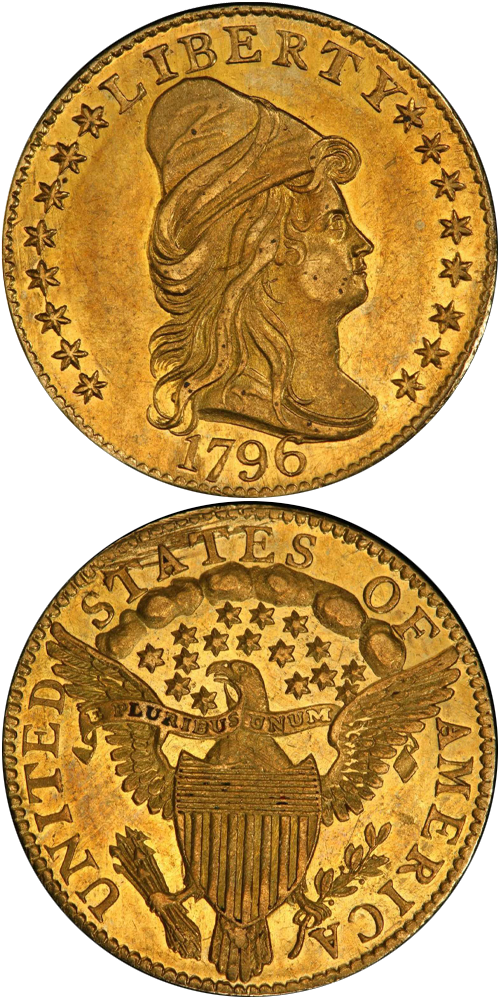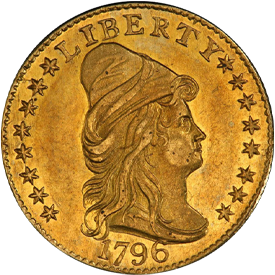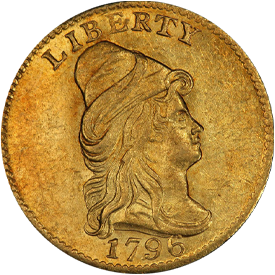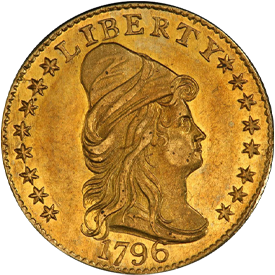The early gold coins of the United States (struck prior to 1834) are among the rarest and most expensive known. This is not only due to their low original mintage but the extensive export and melting that took place in the 1830s.
The Quarter Eagle or $2.50 gold coin along with Half Eagle ($5.00) and Eagle ($10.00) was one of three gold coins authorized in the Mint Act of 1792. Production of gold coins began in 1795 with the Half Eagle and Eagle and the following year, striking of Quarter Eagles got underway. The first die lacked stars on the obverse, and with a miniscule mintage of only 963 pieces (of which an estimated 100-125 survive) easily qualifies as one of the rarest, if not the rarest coin in the U.S. Type set. Due to the popularity of type collecting, the enormous demand for this coin has driven prices into the upper five-figures for even low-grade pieces and well into six-figures for choice examples.
Sixteen stars were added to the obverse later in 1796, but only 432 pieces were struck that year, making the 1796 with-stars even rarer than the no-stars variety. Fortunately for type collectors, the design continued through 1807, so pieces dated 1798 and later are more affordable but XF and better examples are still not inexpensive by any means reaching the low to mid five-figure range.









